LATEST DISCOVERIES ABOUT LEONARDO DA VINCI

On the occasion of a new discovery about Leonardo da Vinci, in June 2016, I had the honour to talk with Alessandro Vezzosi, an outstanding man, art critic, leonardista, interdisciplinary expert and creative director of Museo Ideale Leonardo Da Vinci with its Archivi Leonardismi and the nascent Garden of Leonardo and Utopia in Vinci (Florence, Italy). The Italian Leonardo expert boasts incredible advances in the world of culture and science. Since 1972 he has been the author and curator of hundreds of exhibitions, publications, conferences and lectures on Leonardo Da Vinci, the Renaissance, contemporary art and design, from the US to Japan. In this interview we talked a lot about Leonardo’s biography, recently discovered descendants, Monnalisa’s smile and various myths.
In 1981 Vezzosi curated first traveling exhibition from Vinci to the University Art Museum in Berkeley and other museums of the USA. In 1983 the scientist published Leonardo’s Tuscany and in 1988 edited the first CD-ROM Leonardo: Digital painting. Some years later there was the interesting first multimedia edition of the Codex Leicester by Leonardo in the Bill Gates collection and then the exhibition with the original manuscript in Tokyo in 2005. The scientist’s interests, besides the figure of Leonardo, are also Raphael and Michelangelo: other great masters of Italian Renaissance.
Among the most recent international exhibitions Vezzosi curated: And There Was Light. Leonardo, Michelangelo, Raphael in Gothenburg (2010) with Francesco Buranelli and Mona Lisa Unveiled in the Freedom Tower at the University of Miami with Agnese Sabato. In 2012 in Tokyo: Leonardo and the idea of beauty (400,000 visitors), in Istanbul and Taiwan: The Great Masters. Leonardo, Michelangelo, Raphael and Leonardo. Mona Lisa. The myths in the Kaohsiung Museum of Fine Arts and the National Palace Museum in Taipei (2013-2014). Others succesful exhibitions organized by MILDV director were: Leonardo da Vinci. Beyond the visible in Edo Tokyo Museum (2016) and From Clos Lucé at the Louvre, the three masterpieces of Leonardo Da Vinci in Amboise, France (2016).
Up until now Alessandro Vezzosi published many important interesting books, translated already in 18 languages. One of his famous publication from 1996, intitled Leonardo Da Vinci. Art and science of the universe printed in Milan by Electa Publisher, was translated into French for Gallimard-Paris Editions, English for Thames & Hudson and Chinese and Portuguese for Abrams-up. The publication is presently available in the e-book version; enriched and interactive. Among the most recent publications, the large volumes of the Renaissance trilogy: Leonardo Infinito (2008), Raphael Universal with Claudio Strinati (2010) and Absolute Michelangelo (2012), The Myth of Leonardo in Otranto. Mona Lisa and Gioconda naked through five centuries (2014) and Leonardo was not vegetarian (2015).
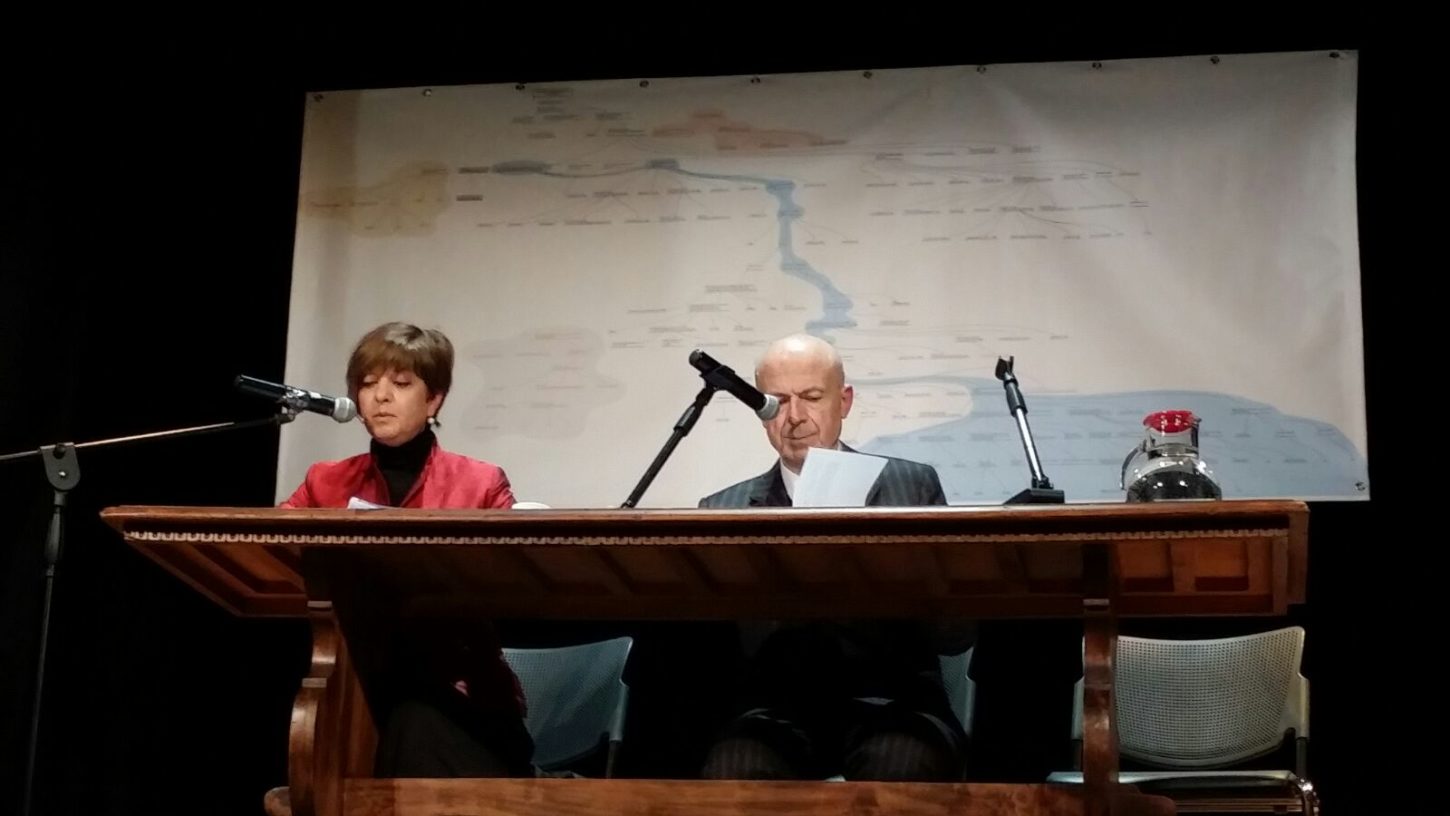
Do you remember your first contact with works by Leonardo Da Vinci? What impressed you so much about him and his art that you decided to study his person for work?
In 1959 I was a little child and my aunt Vezzosina had to participate in a game show answering questions on Leonardo. It was Lascia o raddoppia by Mike Bongiorno. The transmission was interrupted and she gave me the great book of Leonardo on which she had prepared, and which illustrated the life and work of Leonardo, from art to science and technology. I have always been impressed by his thought and work’s modernity. Since 1968 I started to become interested in Leonardo in relation to contemporary art. I considered him a great protagonist of an ancient vanguard, the Renaissance, the precursor of twentieth century trends, from Cubism and Futurism to Fluxus, Land and Conceptual Art.
In 2014 you revealed the true origine of Monnalisa, the world most famous portrait by Da Vinci. How about her mysterious smile? What still remains unexplained in the Gioconda case?
The Mona Lisa is the most famous painting so exhaustively examined, but some basic facts remain unknown: who commissioned it, the subject’s identity, the pictorial genesis, and the date. Too many legends, fantasies and absurd hypotheses, exchanged for certainties, have created misunderstandings. In the last years, more than absolute certainties, I have been reconstructing the most likely hypotheses with reasonable interpretations of the few certain documents: the progressive transformations and painting definitions, presumably from 1502/1503 (the Heidelberg note) at least 1515 (and perhaps 1518 Clos Lucé). The identification with Mona Lisa Gherardini, commissioned not by his husband but by Giuliano de ‘Medici, who had first been her childhood friend and then fell in love with Lisa, as attested by a document dated 26 September 1515 in the Florence State and the diary of Cardinal of Aragon in the visit to the studio of Leonardo Clos Lucé, October 10, 1517. Currently, just last June 17th, 2016, for the celebration of the fifth centenary of Leonardo’s arrival in France, I am the curator in the Clos Lucé to Amboise, where he was hosted by King Francis I, an exhibition entitled From Clos Lucé at the Louvre, the three masterpieces of Leonardo Da Vinci (Du Clos Lucé au Louvre, les trois d’œuvre chefs-de Léonard de Vinci) focused on the history, myth and relevance of the three masterpieces of his maturity that Leonardo had brought with him: the Mona Lisa, Saint Anne and Saint John that are now the treasures of the Louvre in Paris. This exhibition has as one of its leitmotiv the smile that is found in all three paintings and constitutes an aesthetic, technical and conceptual summit of Leonardo’s painting of expression of the soul, the infinite charm and art enigma.
Have you ever read Leonardo’s Da Vinci codes by Dan Brown? Do the writers or documents directors contact you, or the Museum, often for consultations?
With the Museo Ideale Leonardo da Vinci we realized the theatrical processess of the Da Vinci Code by Dan Brown that showed that it was just a novel based, in those aspects that led to the extraordinary success, on lies and not on historical and artistic truths. Often writers or directors ask us information and tips that, however, are often misunderstood because the universal genius of Leonardo is very human and often not comprehended.
What was the true Leonardo’s character? Was he really homosexual and connected to the Masons? Which myths about this Renaissance genius could you shatter?
Leonardo was animated by an endless search for knowledge, creativity, truth and perfection. He suffered because he often felt misunderstood victim of slander and treachery. He was a free artist and a free man: inappropriately many have tried to give him a label such as a homosexual, although he knew love with women; as a vegetarian, although he studied how best to cook roast meat; unable to finish his work, even if only the Mona Lisa or just the Vitruvian Man drawing could give an incomparable testimony to a glorious life. And we have received almost 4,000 sheets with drawings and texts and almost as many sketches that until now had been lost, and maybe you will discover other works of art, including sculptures. Many novels have invented an esoterism concerning Leonardo which is really out of place: it creates misunderstandings about the great mystery of art that Leonardo expressed admirably. For his possible relations with the Masons, there is no evidence or proof. Rather than destroy the myths of Leonardo, I work to raise awareness of his historical reality and his relevance today. What I tend to downsize and question are the rhetoric and falsehoods surrounding his legend, along with many absurd and ridiculous phenomena. With Agnese Sabato and the Museo Ideale Leonardo Da Vinci in 2005 we have drawn up and distributed worldwide in multiple languages an artfully ethical manifesto: Let’s save Leonardo.
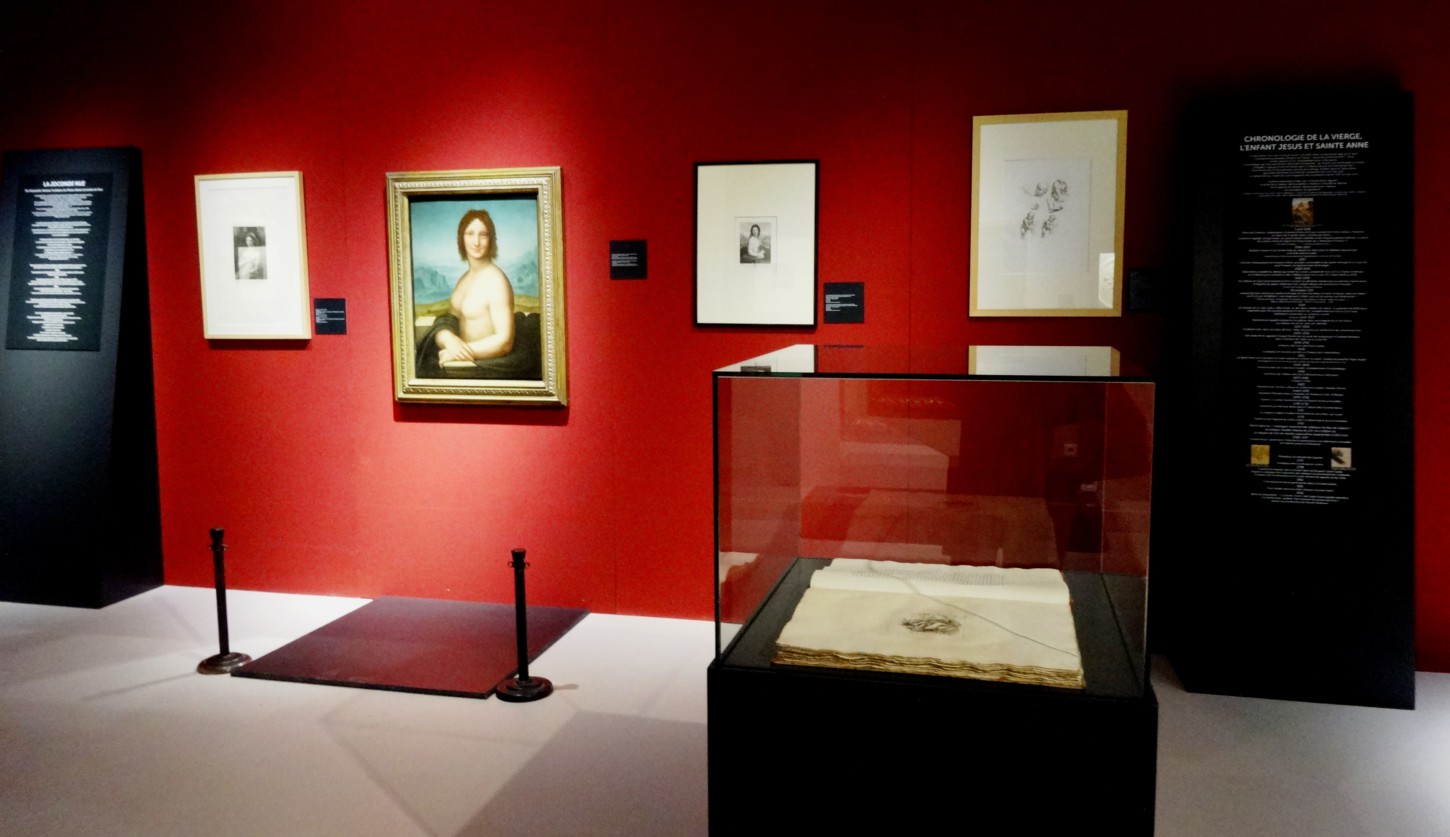
Giorgio Vasari wrote about him in Lives of the Most Eminent Italian Architects, Painters, and Sculptors: “his every action is so divine, that, surpassing all other men, it makes itself clearly known as a thing bestowed by God (as it is), and not acquired by human art”. In your words, what is Leonardo’s phenomenon?
In his theoretical writings on Leonardo painting and art approach nature and the divine creator in tune with what Vasari writes. Leonardo has often been regarded as a superman and a figure similar to Goethe’s Faust. In fact he is a phenomenon at several interdisciplinary levels and multiplicity: he calls himself a disciple of experience. For example, his painting is a unique case in the synthesis which he claims of art, science and philosophy. Its design is a quality unparalleled not only depicting but also interpreting and reinventing the world around him, with original solutions: the graphodynamics representation 360-degree view and intuition of analogies (human-machine-earth- architecture-body) to an analytical conception of design and technological innovation. With its art-science Leonardo wanted to accomplish the utopia and transform the world on a human scale. He rediscovered the past to design and invent his present and project it into the future. This is why I mentioned at the beginning his modernity as avant-garde artist and I think they are two definitions emblematic from a poet like Baudelaire: Leonardo as “deep and dark mirror”, the unconscious, and the human soul, poetry and secrets of the universe, and the father of psychoanalysis, Freud, “He was like a man who wakes up too early in the darkness while the others are still asleep”.
Despite his “divine” fame, Italy didn’t give him enough support so he decided, in old age, to go to France. Why did it happen? In this period (1515) he created his self-portrait conserved presently in Turin Biblioteca Reale. Is it correct?
Leonardo did not have the economic fortunes of his rival Michelangelo and Raphael, this last inspired by him. He had not the success and commissions as they did in the Roman period, between 1513 and 1516, but above all his patron in those years, Giuliano de ‘Medici, who I mentioned at the beginning for the Mona Lisa, died March 17,1516. Leonardo therefore accepted the insistent invitation that the new king of France, Francis I, had extended him and he went to his court at Amboise, in the Palace of Clos Lucé. He was salaried as first painter, engineer and architect of the King as well as meschanischien d’estat. The most likely and important depiction of Leonardo is a self-portrait from the Royal Library of Turin. Some pictorial images are nothing more than obvious forgeries of later centuries.
Your latest discovery regards Leonardo’s descendants. You found 41 of them and one of them is a famous Italian director Franco Zeffirelli. How long have you been conducting this research? Is the chapter about Vinci’s descendants is definitely closed?
I started my studies and interdisciplinary research on Leonardo and his ancestors and descendants between 1969 and 1973. After the creation of the Museo Ideale Leonardo Da Vinci (1993), gradually, with Agnese Sabato, we have come to a series of extraordinary and surprising discoveries. We have presented them on April 14, 2016, in the theatre in Vinci and then in May 2 in the Presidency of the Tuscany Regional Council, as part of an international conference of scholars and scientists. In Vinci we have made these discoveries public in front of a crowd of scholars and enthusiasts, in a synthesis of absolutely certain results, which has had resounding echoes and have sometimes been misunderstood. For example, between the Franco Zeffirelli’s family and that of Leonardo’s descendants there is a definite affinity because of a wedding in 1794; but it is not blood related. Significant is the fact that Zeffirelli’s family was in possession, in the nineteenth century, of both the houses that had belonged to the Leonardo’s family where he was born in April, 15, 1452. With Agnese Sabato we have done the research not only in the historical archives and libraries, but also in churches, cemeteries and private houses, recovering manuscripts, oral traditions and photographs. We conducted numerous interviews with living descendants. Leonardo had at least 21 brothers (maybe even 23 or 24). In the family tree in addition to the 130 traditional names, we have identified other 150 names, up to 41 living descendants in a direct line. This includes over 37 women in the line of Leonardo’s brother, Domenico, lasting until today. We found Leonardo’s ancestors unknown up to now in Spain and many individual burials in Tuscany since the early 900s, also residences and traces of possible burials from the fifteenth to the nineteenth century. Currently we are starting to work with scientific institutions on the Leonardo’s DNA, to isolate the Y gene of the living descendants in direct male line and compare his alleged biological remains. We have in fact identified some traces of possible “relics.” Methodologically, we always tend to distinguish verified data from the fantasies.
What is still to be discovered about Leonardo? What will concern your next researches?
We will continue research that has already provided important results, useful traces to be examined and verified. We make them public also to stimulate responses by other scholars and reports and collaborations, not only in Italy. It may be possible to discover other lost works: at least 3,500 sheets with drawings, including ten of the eighteen manuscripts used by the pupil Francesco Melzi to compile the Book of Painting; cartoons such as those for the Battle of Anghiari; autograph paintings, studies of the teacher in his shop; sculptures not yet identified. Also we continue for the Leonardo Archive cataloging paintings of Leonardo’s school, the Archive of Fingerprints (Leonardo and his collaborators) and the Archivio Leonardismi (the myth, the use and abuse of Leonardo’s art by the media). And with research on issues such as Leonardo and the East, including the likely identity of his mother Catherine (a possible slave) and with a number of original exhibitions to introduce unknown aspects and the modernity of Leonardo. Finally, we have planned the construction of the Garden of Leonardo and Utopia for the Center of Art-nature and science as a citadel of creativity that began in Vinci with the Leonardo’s Labyrinth, the Path of different trees and flowers and the endless knot of roses.
PHOTO GALLERY FROM MILDV ARCHIVE:
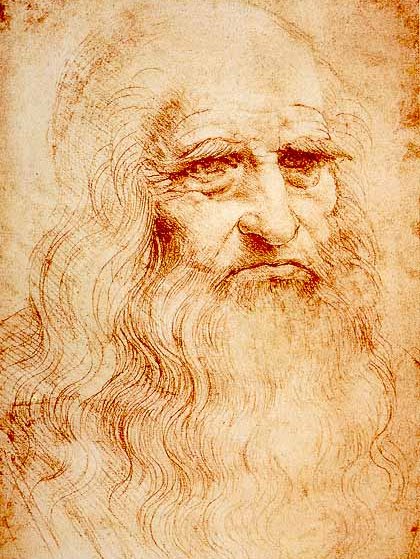

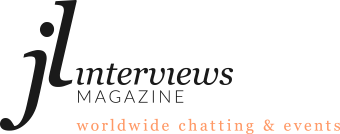

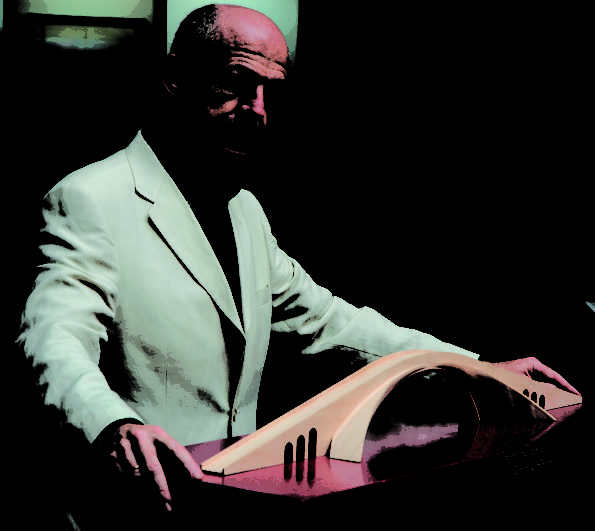
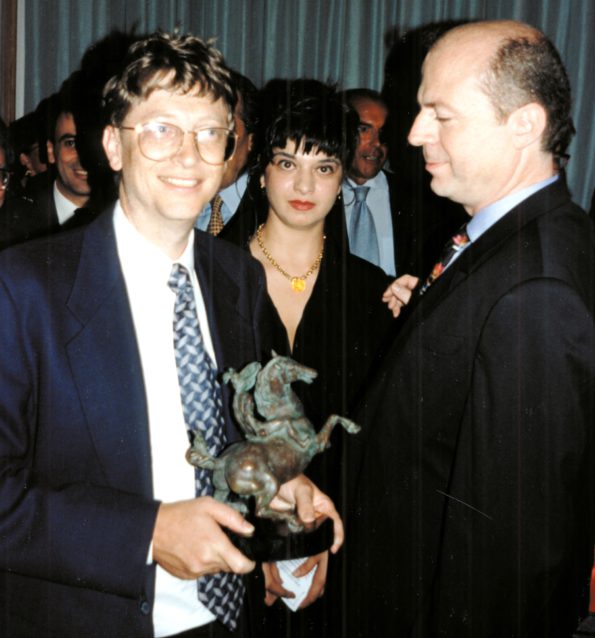
Tom Gage
Dear Colleague,
I am author Tom Gage, Emeritus Professor. I am writing a chapter in my book on Leonardo and would very much like to talk with Alessandro Vezzosi regarding Leonardo’s mother. I have issues with Martin Kemp and Guiseppe Pallanti recent work.
Would this be possible? I know no Italian but if necessary, would pay for a translator.
I plan to be in Florence from 12/26 to 12/29 and should these ideas materialize, my wife and I will come to Vinci to see the museum and interview Dr. Vezzosi. My wife and I will be lodging at Hotel Laurus al Duomo in Firenze.
Thank you very much.
Yours sincerely,
Tom Gage, Professor Emeritus, Humboldt State University
Joanna Longawa
Dear Tom Gage, please contact directly the Museum of Leonardo Da Vinci at info@museoleonardo.it and direct your e-mail to Sig. Vezzosi. They should reply to you in English. They are very gentle! If you and Sig. Vezzosi need my help as translator, please let me know. Good luck! Joanna Longawa, Jl Interviews Editor in Chief
Lawrence Shurtz
I see what you have done and congratulate you on a great job. Can you confirm anything about Leonardo’s mother. I am sure she was a slave from all the evidence presented throughout Leonardo’s life. Thanks Lawrence
CORNELIUS-FRANCISC PATRAS
Hi,
I try to get in touch with Mr.
Alessandro Vezzosi.
Reason: potential early small work by Raphael and signature “Raphael Sant” hidden in the painting.
Here is my contact
franciscpatras@gmail.com
I’m in Canada.
2021/03/26
Ottawa
CORNELIUS-FRANCISC PATRAS
Hi,
I try to get in touch with Mr.
Alessandro Vezzosi.
Reason: potential early small work by Raphael and signature “Raphael Sant” hidden in the painting.
Here is my contact
I’m in Canada.
2021/03/26
Ottawa